
Serial number 3752

Pilot Jack Pilot claimed that it was "a full sized table
model at a sales-clinching price with these sales features:- Inbuilt
Frame Aerial; The Pilot Log; 5 valve all wave superhet, incorporating
negative feed-back. A family set at a popular price. Retailing at 19 ½
gns (tax paid)", though the underside of this one revealed in pencil
that the price was £ 19 19s 6d. It should be noted that there are two
versions of this radio an AC/DC one and this, the AC only one which has
a potentially live chassis as the transformer only supplies the heater
and dial lamp voltages. What is it worth today? for a working
radio and reasonable external condition you might reasonably expect to
get £ 20.
The supplement to the Wireless and Electrical Trader of March 1951
states that this model introduced in October 1949 was priced at £ 19
19s 6d. 16 17s plus purchase tax. This example must be one of the
earliest models, since as can be seen from the dates and batch codes on
some of the capacitors they were made in the latter part of 1949.
This radio was in a sorry state when given to me (another one which came via the daughter of Roy Nightingale). But what struck me of interest was that it had both octal and the new miniature B7G valves, a turning point in design? Never one to look a gift horse in the mouth I accepted it and set about getting it back to life. An initial inspection of the condition of the mains lead revealed that connecting the set to the mains would be inadvisable especially as the 13amp fuse in the plug had been wrapped in a piece of aluminium milk bottle top though I discovered that the fuse was perfectly fine.
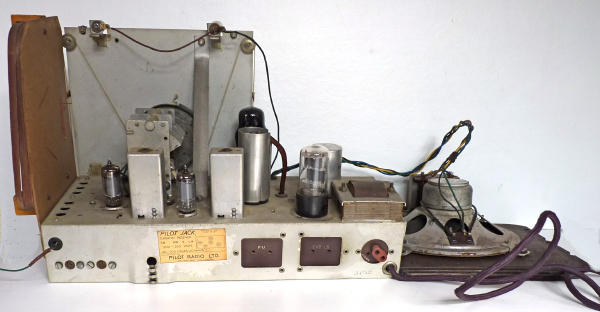
Chassis and loudspeaker after cleaning.
The chassis and loudspeaker were removed and the drive cord after some experimentation was threaded back on the pulleys using a piece of bent wire and long tweezers. The top of the chassis and the valves were cleaned of dust and grime and a piece of hardboard the same size as the frame aerial was temporally bolted to the opposite end to support it on the bench.
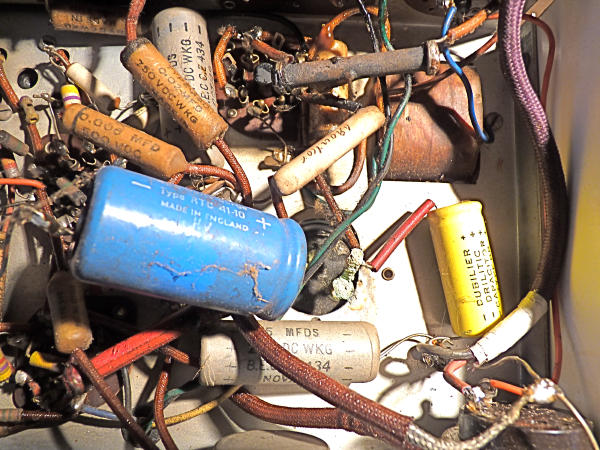
Underside of chassis showing some of the original faulty components
As can be seen from the picture above several repairs had been carried out in the past. The main electrolytic smoothing capacitor had failed and been replaced by the blue and yellow components seen here, the volume control had been replaced by one incorporating a single pole mains switch rather than the double pole that would have been originally fitted. The surge limiting resistor (top RH corner) which should be 100 Ω was only 50 Ω One of the replacement capacitors was effectively open circuit at were three of the original items. The insides of the original chassis mounted capacitor were removed and the casing used to house a modern replacement and the yellow Dubilier seen here after reforming was retained. With a new mains lead equipped with a 3 Amp fuse in place the set was energised. Neither of the dial lamps worked but there was distorted loudspeaker output on all three wavebands but only with the volume control turned to maximum. Replacing several capacitors associated with the volume and tone control circuits solved the problem and the radio now performs well.
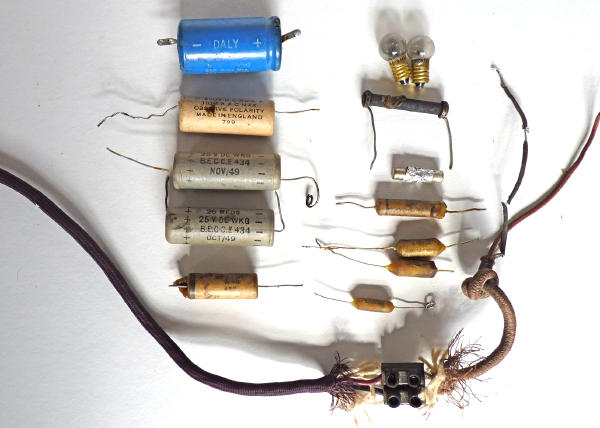
These are the components that were replaced.
People often ask me if it is still possible to get replacement valves and are surprised when I say that more often than not it is the failure of other components which have caused the radio to stop working. The repair of this set amply supports my assertion. As a matter of interest I tested the valves on my AVO valve tester and found that although they were not perfect none were in the red replace portion of the scale.
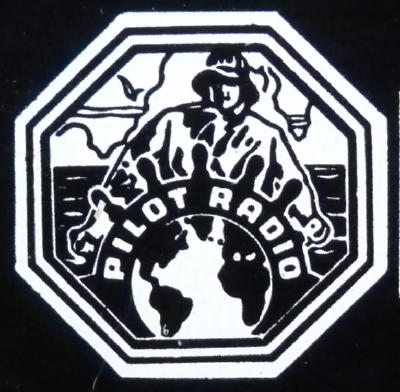

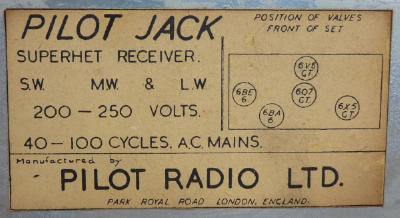
Why the radio was named Pilot Jack.
The signal "Pilot Jack" means what they're all
saying "I Require a Pilot". This was their slogan used in
advertisements. The flag (or jack) used for signalling the requirement
for a pilot is that for the letter G (golf) which has a series of
yellow and blue stripes as shown above.
Pilot Radio Ltd 87 Park Royal road London NW10 was a private company
founded in 1935 and associated with the Pilot Radio Corporation of USA.
In 1959 it was purchased by Ultra and became a wholly owned subsidiary
of Ultra Electric Ltd.
Source: www.gracesguide.co.uk
Circuit diagram:
http://www.radiomanuals.info/page_p.htm
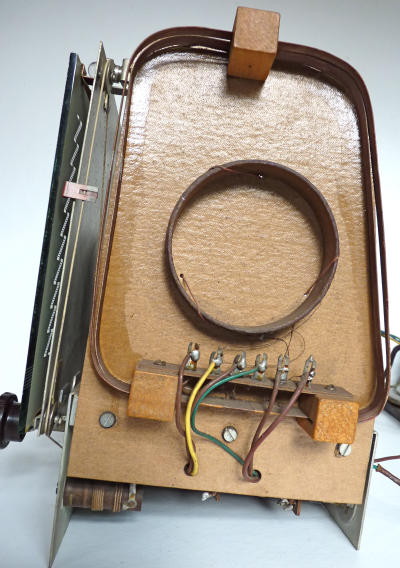
Frame aerial

